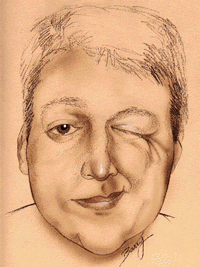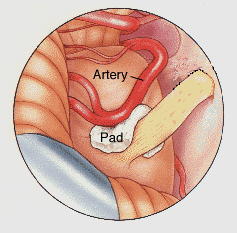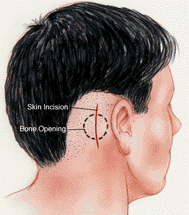
About Hemifacial Spasm
Hemifacial spasm is a condition similar to trigeminal neuralgia and is due to an abnormal discharge of another nerve called the "facial nerve". In trigeminal neuralgia the abnormal discharge is in a pain-bearing trigeminal nerve. In hemifacial spasm the abnormal discharge is in the facial nerve which supplies the muscles of the face and thus causes twitching or spasms of the muscles of the face and not pain.
Treatment

No drug has proven effective in preventing or stopping hemifacial spasm. Muscle relaxants and the drugs used for trigeminal neuralgia commonly are given to patients with hemifacial spasm, however they rarely help. In the past, attempts were made to cut or crush the branches of the facial nerve. However, these destructive procedures were associated with facial paralysis and when the paralysis recovered the spasms returned.
One form of relieving spasm now in current use involves injecting botulinum toxin into the affected muscles. This results in relief of the spasms by causing weakness of some muscles of the face. It often is necessary to repeat the injections after two to six months. The most effective treatment of hemifacial spasm is a vascular decompression procedure of the facial nerve. The procedure is similar to the vascular decompression procedure described in the section on the treatment of trigeminal neuralgia, however this procedure is directed to the facial nerve approximately one-half inch away from the trigeminal nerve.

The site of the skin incision and skull opening are nearly the same for trigeminal neuralgia and hemifacial spasm, however in hemifacial spasm the facial nerve is exposed. The risks of this operation are the same as those described in the section on vascular decompression operations for trigeminal neuralgia. The operation relieves the spasm permanently in the great majority of patients, however, as with trigeminal neuralgia, the problem may persist or recur in a few patients in spite of this form of treatment.

 No drug has proven effective in preventing or stopping hemifacial spasm. Muscle relaxants and the drugs used for trigeminal neuralgia commonly are given to patients with hemifacial spasm, however they rarely help. In the past, attempts were made to cut or crush the branches of the facial nerve. However, these destructive procedures were associated with facial paralysis and when the paralysis recovered the spasms returned.
One form of relieving spasm now in current use involves injecting botulinum toxin into the affected muscles. This results in relief of the spasms by causing weakness of some muscles of the face. It often is necessary to repeat the injections after two to six months. The most effective treatment of hemifacial spasm is a vascular decompression procedure of the facial nerve. The procedure is similar to the vascular decompression procedure described in the section on the treatment of trigeminal neuralgia, however this procedure is directed to the facial nerve approximately one-half inch away from the trigeminal nerve.
No drug has proven effective in preventing or stopping hemifacial spasm. Muscle relaxants and the drugs used for trigeminal neuralgia commonly are given to patients with hemifacial spasm, however they rarely help. In the past, attempts were made to cut or crush the branches of the facial nerve. However, these destructive procedures were associated with facial paralysis and when the paralysis recovered the spasms returned.
One form of relieving spasm now in current use involves injecting botulinum toxin into the affected muscles. This results in relief of the spasms by causing weakness of some muscles of the face. It often is necessary to repeat the injections after two to six months. The most effective treatment of hemifacial spasm is a vascular decompression procedure of the facial nerve. The procedure is similar to the vascular decompression procedure described in the section on the treatment of trigeminal neuralgia, however this procedure is directed to the facial nerve approximately one-half inch away from the trigeminal nerve.
 The site of the skin incision and skull opening are nearly the same for trigeminal neuralgia and hemifacial spasm, however in hemifacial spasm the facial nerve is exposed. The risks of this operation are the same as those described in the section on vascular decompression operations for trigeminal neuralgia. The operation relieves the spasm permanently in the great majority of patients, however, as with trigeminal neuralgia, the problem may persist or recur in a few patients in spite of this form of treatment.
The site of the skin incision and skull opening are nearly the same for trigeminal neuralgia and hemifacial spasm, however in hemifacial spasm the facial nerve is exposed. The risks of this operation are the same as those described in the section on vascular decompression operations for trigeminal neuralgia. The operation relieves the spasm permanently in the great majority of patients, however, as with trigeminal neuralgia, the problem may persist or recur in a few patients in spite of this form of treatment.
